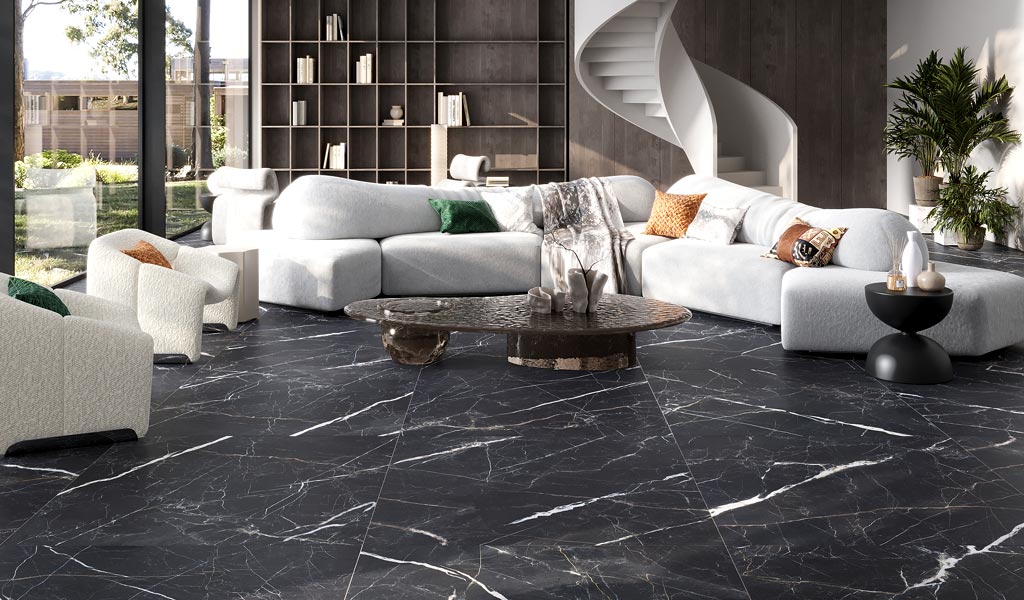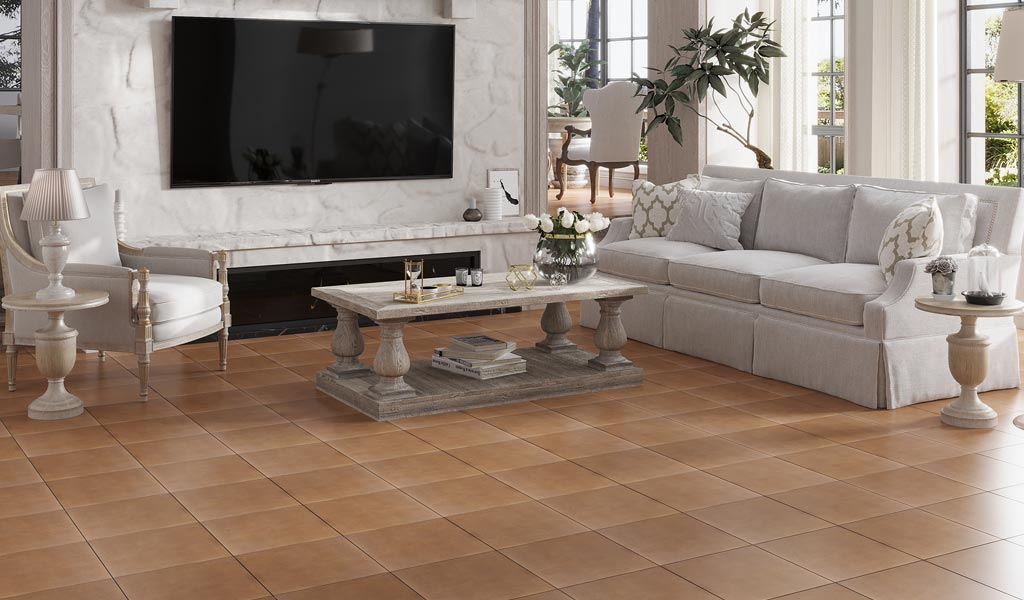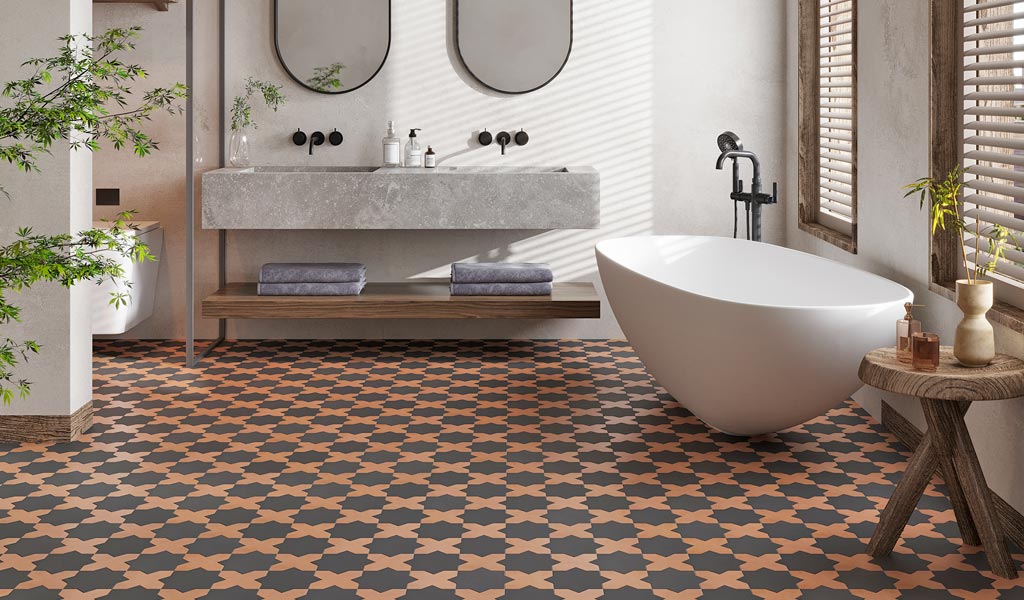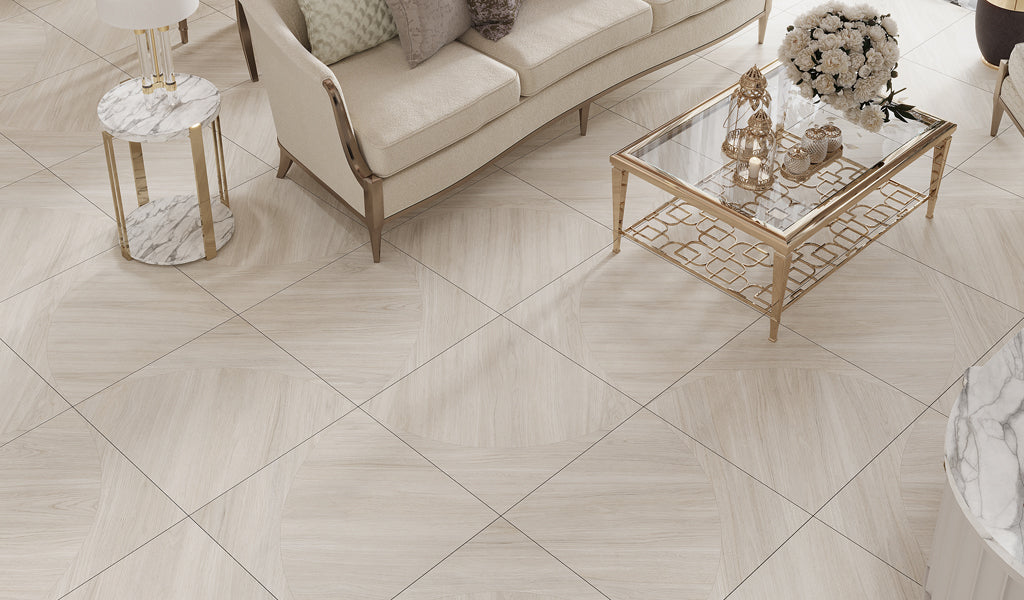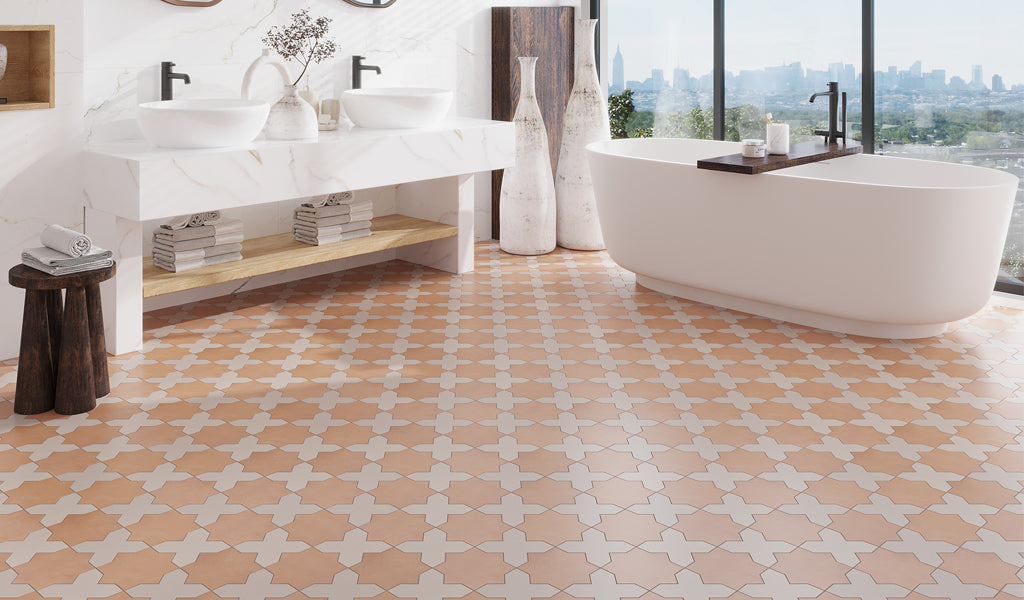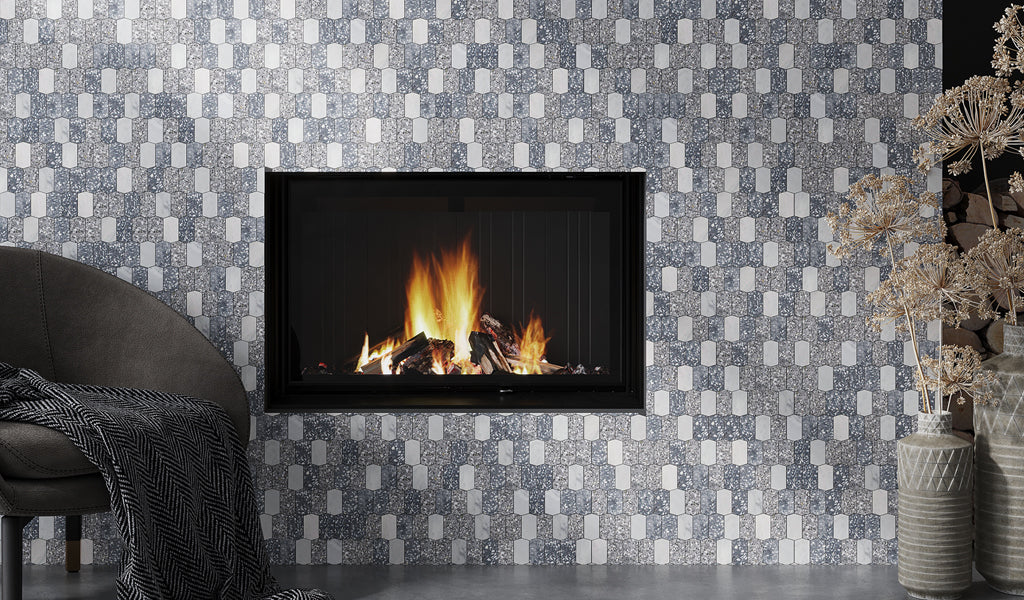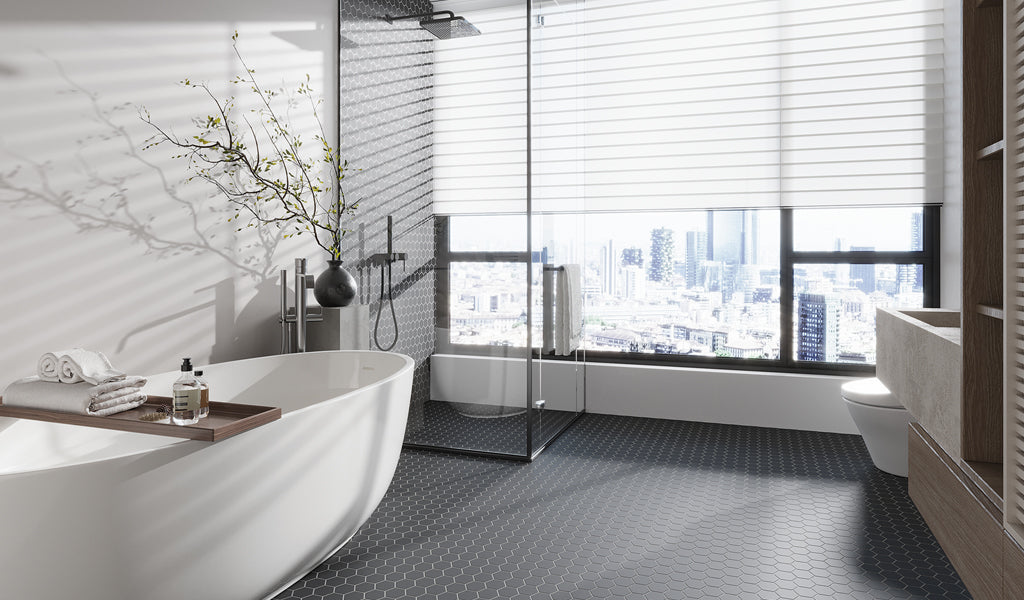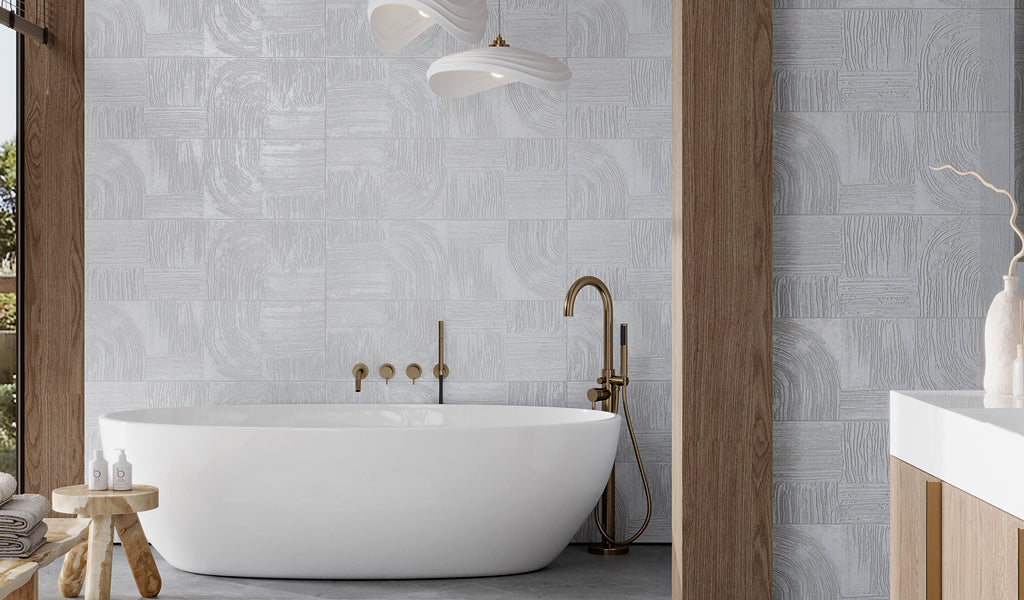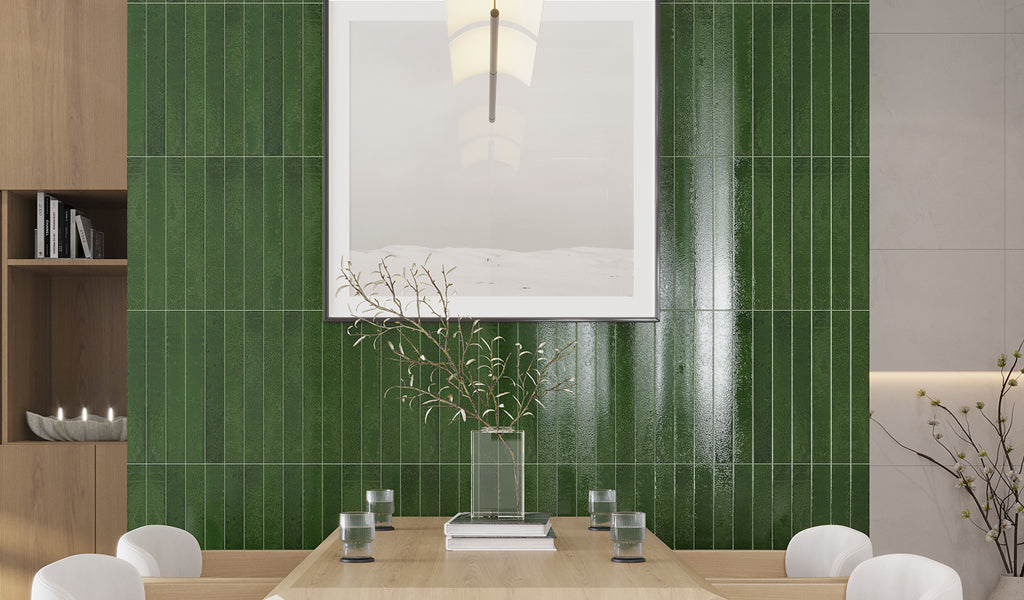Peel and Stick Tile Removal Gone Wrong? Avoid These Mistakes
Oct 15, 2025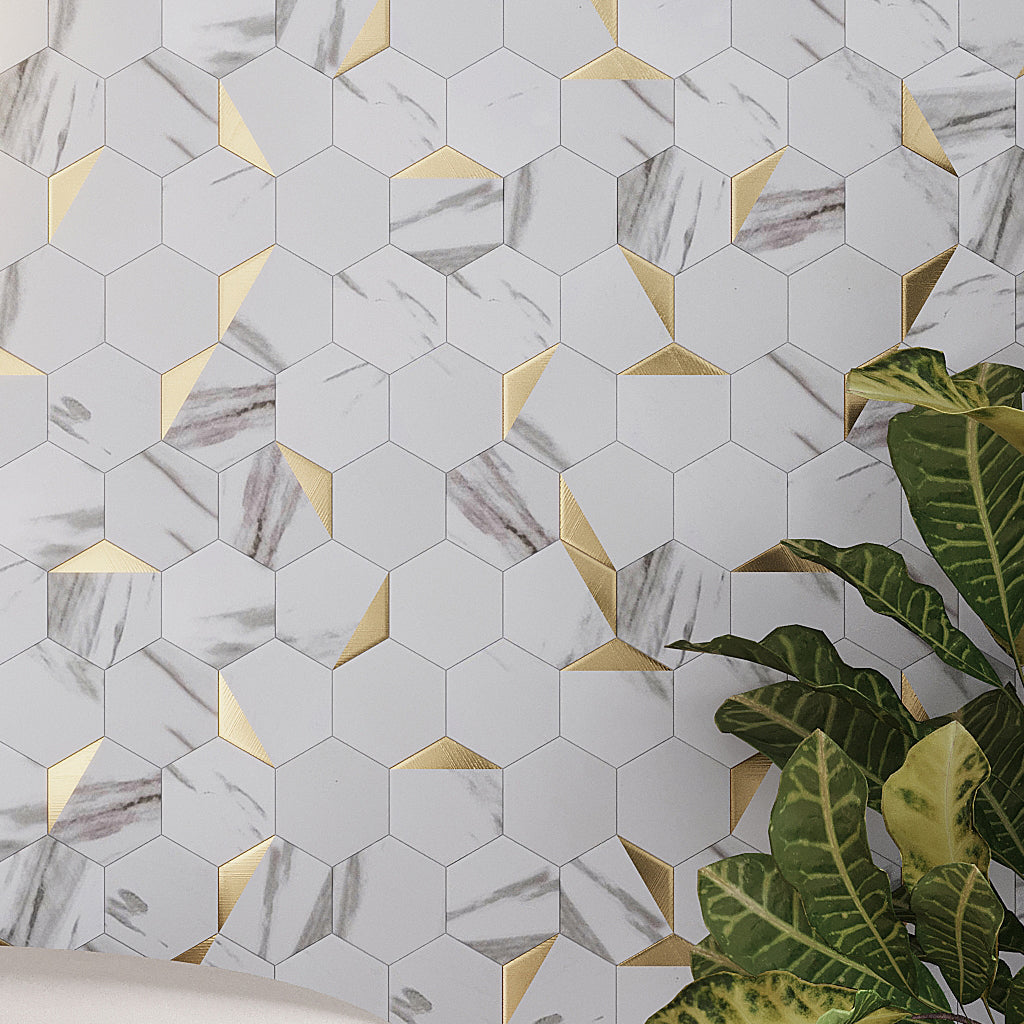
Peel and stick wall tile is a stylish and easy way to refresh kitchen backsplashes, bathroom walls, and fireplace surrounds. They bring instant glamor, easy maintenance, and long-lasting durability to a room without the hassle and mess of a traditional installation. Because of their self-adhesive backing, peel and stick tile is a natural fit for DIY enthusiasts, homeowners, or renters looking for a quick weekend project that requires no adhesive, grout, or specialized tools.
But once you have enjoyed the convenience and beauty of stick-on wall accents and it is time to get them off the surface they cover, you might be wondering: how to remove peel and stick tile. Some believe it is simply a matter of peeling it off, but doing so without care or a plan may lead to a damaged wall surface, stubborn adhesive residue, or chipped paint. This guide covers safety precautions and the proper steps involved in neatly removing the tiles and leaving the surface clean, smooth, and ready for a new transformation.
 Safety Tips Before Removing Peel and Stick Tile
Safety Tips Before Removing Peel and Stick Tile
Self-adhesive wall tiles may be simple to install, but the removal process requires patience and care. When removing peel and stick tile, keep these safety tips in mind:
1. Cover surrounding areas:
Use painter's tape, plastic sheets, or drop cloths to cover the surfaces nearby. This will prevent scratches, tool marks, or sticky adhesive from dropping and damaging them.
2. Be cautious of electrical safety:
When learning how to remove peel and stick backsplash, always turn the power off for switches and outlets within the work area. Cover exposed outlets with tape or covers and use a voltage detector to ensure no electricity is present before commencing work.
3. Cover your eyes:
Safety goggles are just as essential to protect eyes against adhesive remover or bits of tile pieces when prying or scraping.
4. Wear gloves:
Wearing thick work gloves will shield against chemicals, cuts, and scrapes. Tile edges can be sharp, and the residue left behind can be bothersome to the skin.
5. Proper air ventilation:
Whether removing backsplash, wall, or fireplace tile, having proper air flow helps minimize the chance of inhaling solvent or adhesive remover. All windows will need to stay open and keep the fan running to circulate air faster.
Tools You Will Need to Remove Peel and Stick Tile
- The right tools on hand make it simple and quicker to remove peel and stick tile. Here’s what you will need:
- Hair dryer or heat gun (to soften the adhesive)
- Protective gloves and goggles
- Warm soapy water and cleaning cloths
- Pry bar or putty knife
- Adhesive stripper or rubbing alcohol
- Utility knife or sharp scraper
How to Prepare the Area for Tile Removal

Before starting the removal process, ensure the following:
-
Clear the area: Move furnishings, decor, and appliances from near the tiled area. This will open up the work area and prevent valuable items from being damaged.
-
Cover fittings: Protect countertops, floors, and mantels with drop cloths. This extra protection prevents scratches, dropping adhesive, or damage involving tools.
-
Power shutdown: A crucial step in how to remove peel and stick backsplash is switching off the power at the breaker. This eliminates any electrical hazards. Tape any power outlets to offer a further barrier.
- Test a corner tile: Test how much heat or pressure is needed before attempting to remove the entire surface. It allows you to figure out the right balance before proceeding with the job.
How to Remove Peel and Stick Tile: Step-by-Step
Every step of this groutless tile removal process is essential to prevent damaging your walls, backsplash, or fireplace surround. Following these instructions will ensure that tiles come off cleanly and easily. Your surfaces will be level and ready for a fresh installation. These steps will guide you through a safe, effective, and damage-free peel and stick tile removal.
 Step 1: Preheat the Tile
Step 1: Preheat the Tile
Heat the tile with a hair dryer or a heat gun, maintaining a distance with the device away from the surface in order not to burn it. Gradual heat loosens the adhesive, and it is easy to pry off the tile without damaging the surface below.
 Step 2: Release the Tile Edges
Step 2: Release the Tile Edges
The next step on how to remove peel and stick tile is to scratch gently around the edge of the tile with a utility knife to break up the seal of the adhesive. After breaking the seal, use a putty knife to gradually lift a section of the tile’s edging, working around it without damaging what is below.
 Step 3: Peel Away the Tile
Step 3: Peel Away the Tile
After loosening the edges, slowly pry the tile loose from the surface. For instance, if removing Copper 12x12 Honed Brick PVC Peel & Stick Tile, work slowly to prevent breaking the tile or gouging the wall below. If you find there is resistance, apply heat again to loosen the adhesive some more to remove it easily without damage. Work continuously at peeling to avoid chipping or gouging.
 Step 4: Eliminate Adhesive Residue
Step 4: Eliminate Adhesive Residue
You might be left with adhesive residue after tiles have been removed. Use an adhesive remover or rubbing alcohol on the affected area and allow it to sit for a couple of minutes to loosen the residue. Clear the loose adhesive with a putty knife or a scraper, careful not to scratch the wall's finish.
 Step 5: Clean the Wall Surface
Step 5: Clean the Wall Surface
After peeling off the remaining adhesive, clean the wall with warm water and detergent to eliminate any residue left behind by chemicals. Cleaning smoothens out the surface and prepares it for new tiles to be installed. This also makes it easier for new tiles to adhere firmly to an even surface. Whether your new transformation is a wall or backsplash tile, it will have a long-lasting hold.
 Step 6: Inspect the Wall for Damage
Step 6: Inspect the Wall for Damage
Inspect the surface for gouges, scratches, or high spots and repair if necessary. Fill in any gaps with a surface filler to achieve a smooth, even surface. Prepping the wall ensures that the next tile installation appears polished and holds up well.
Conclusion
There you have it: the steps for how to remove peel and stick tile. Removing self-adhesive tiles the right way makes it possible to have beautiful bathroom walls, kitchen backsplash, or fireplace surround. If you take proper precautions, use the right tools, and utilize the above steps, you will be able to get the job done efficiently without damaging the surface. Having the surface properly prepared after removal will allow for new tiles to go on easily.
For a hassle-free, convenient upgrade, take a look at Apollo Tile's luxurious line of peel and stick tiles designed for quick upgrades and a long-lasting finish. From contemporary backsplash styles to upscale accent wall designs, we have the ideal solution to beautify your space. To learn how the different tiles measure up against each other, check out our blog: Peel and Stick Tile vs. Traditional Tile: Which One is Right for You?
Frequently Asked Questions:
1. What is the life expectancy of peel and stick tile?
Peel and stick tiles last between 5-10 years, depending on where they are placed and how well they are maintained. Proper installation, protection against moisture, and routine cleaning will prolong their life and maintain good appearance over the years.
2. Does a peel and stick backsplash come off easily?
The use of heat and careful prying makes removing peel and stick tile on the backsplash easier. This process makes it less likely to damage the surface beneath.
3. Can you grout a peel and stick backsplash?
Peel and stick backsplash tiles do not require grouting. They have an adhesive backing and are meant to create a clean, grout-free look.
4. Is peel and stick tile water and heat-resistant?
Self-adhesive tiles are water-resistant and suited for bathroom walls and kitchen backsplashes. These tiles are also suitable for use around fireplaces as they can withstand heat. Do check the specifications before you order.
5. What to clean the wall with before peel and stick tile?
Clean the wall with a mild cleaner suitable for the surface to eliminate dirt, grime, or oil. A clean, dry area makes the adhesive stick better and prevents early peeling off of tiles.

